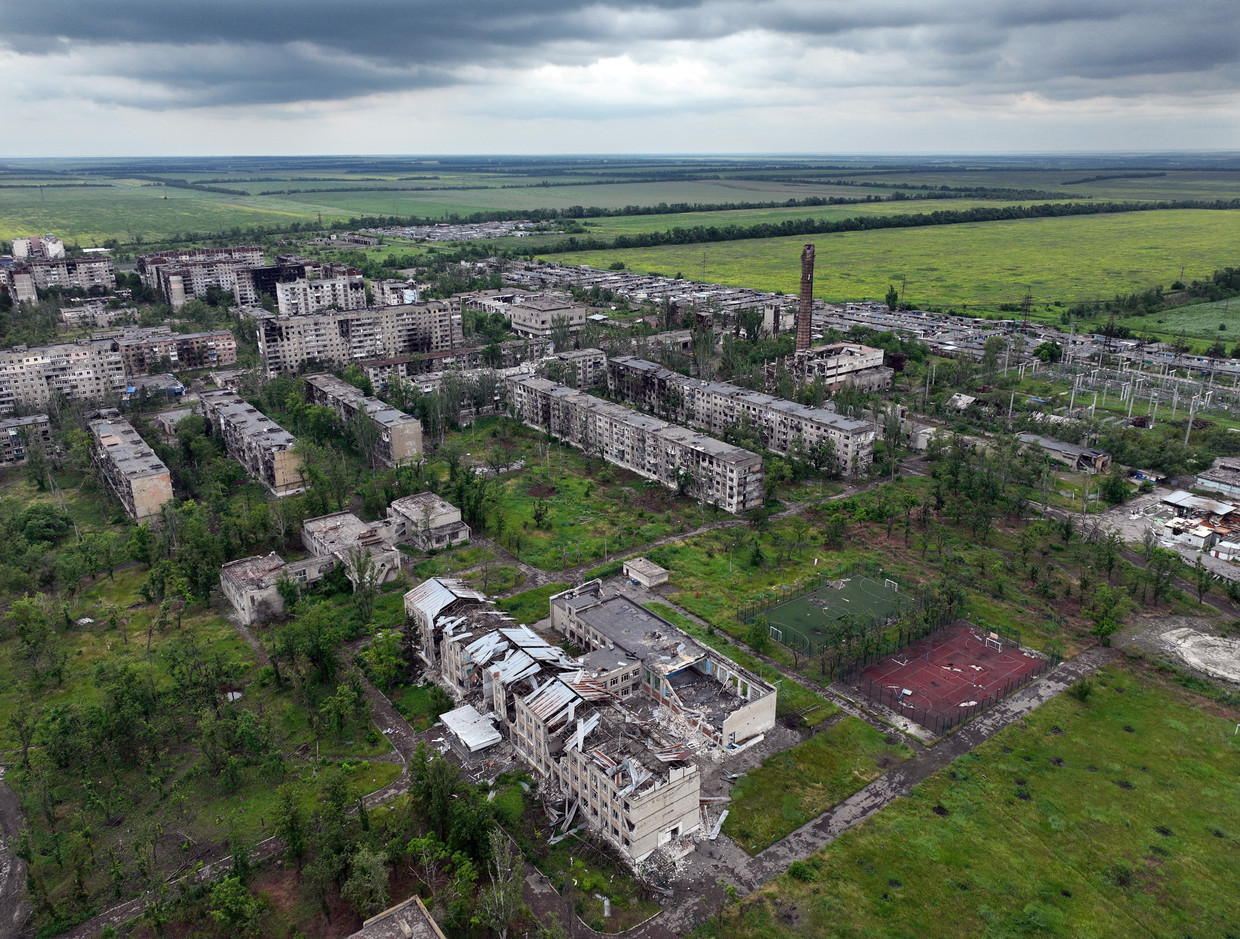The fighting along Ukraine’s 1,600-kilometre front is very diverse. However, what happens in one region always affects other sectors. Overview in five cards.
Along the southern course of the Dnieper River, Ukrainian forces are carrying out amphibious attacks on Russian positions across the river around the city of Kherson. This forces Russia to deploy extended units to prevent Ukraine from gaining a foothold on the east bank.
Some 1,600 kilometers to the north, it is the Russians who are attacking, forming what the Ukrainian army calls a “punching fist,” with tens of thousands of soldiers massed near the cities of Kubyansk and Krymina. This has prompted Ukraine to deploy some of its most experienced airborne units to regain positions lost this summer.
As Ukrainian forces continue to advance along multiple offensive lines in the most ambitious and dangerous offensive campaign in almost a year, it is clear that what happens in one sector always affects the others. “A person who only reads the news does not see it or feel it,” Hanna Malgar, Ukraine’s deputy defense minister, said this week. It may seem like everything takes a long time, “but trust me, it doesn’t seem that way for people who fight. It’s actually a very dynamic and active process.”
In order to better understand how the battle is going along the front, it is useful to look at some of the key areas where Russia and Ukraine have concentrated their forces.
Northeast of the country
After Ukraine expelled Russian forces from almost the entire Kharkiv region last fall, the offensive stalled in the pine forests that dominate the region’s landscape. This sector is about 100 kilometers long and includes cities such as Kubyansk and Kremina. The front line here has been moving back and forth for months: now the Ukrainians are gaining a few kilometers of territory, then the Russians again. This is the common picture in this war. Ukrainians say what distinguishes the northeast of the country is that it is one of the few places where Russian forces engage in long-term offensive operations and achieve small tactical victories.
So far, the Russians have failed to break through Ukrainian lines, according to military analysts and soldiers interviewed over the summer. However, there are no signs that Russian pressure will abate. Ukraine warned last week that Moscow had withdrawn its ground forces from Belarus to participate in offensive operations in the region.
Oleh Matveychuk, a 49-year-old battalion commander, says the Russians have two main goals. The first was to push the Ukrainians across the Uskil River, a natural defensive barrier that played a major role in the fighting. The second is to force Ukraine to deploy forces here so that they cannot be deployed elsewhere.
Given its proximity to the Russian border, Russians do not face the same logistical challenges here as elsewhere. The area has long been a staging area for Russian forces participating in the campaign in the east, and the Kremlin has massed about 100,000 soldiers and more than 500 tanks in the area, according to Ukrainian officials. However, it is not clear whether it will be used in this sector or elsewhere.
Bashmut
Russia declared “victory” in the Battle of Bashmut in May after a long campaign that saw some of the bloodiest battles of the war. The city was leveled, but the fighting never stopped. Almost immediately, Ukrainian forces attempted to expel the Russians from the areas north and south of Bashmut. The victories may seem small, but the Ukrainians continued to advance slowly and steadily.
During a recent visit to Ukrainian positions around the city, the soldiers said they know they are not the spearhead of the counteroffensive, as most of the best weapons and personnel are deployed in the south. But they help the war effort by forcing the Russians to devote resources to defending Bakhmut. Malgar said on Monday that Ukraine had regained control of about 49 square kilometers around the city.
The fighting is fierce, with both sides launching attacks and counterattacks. Over the course of months, Ukraine made gradual advances south of the city, in and around the village of Klyshchevka. In addition, Kiev launched a series of coordinated attacks this week, military officials say, and verified footage of the battle shows.
Meanwhile, fighting continues around the towns of Avdiivka and Majinka, south of Bakhmut. Ukraine is now hoping to exploit any gaps in the defense there as the Russian troop base increasingly extends across the front line. Malgar said the Ukrainian army continues to move slowly forward on the eastern front, where it has recaptured part of the Obitny settlement south of Avdizhievka.
Fullydar
Devastating fighting is taking place around the coal mining town of Fuhldar. It is where the eastern and southern fronts meet, just a few kilometers from vital Russian logistical lines supplying Russian forces in southern Ukraine. The city is therefore of crucial strategic importance.
The Russians bombed Voledar for several months. Drone photos of it New York times The devastating effects reflect the intensity of the fighting. Ukrainian soldiers in this area say their main mission is to hold key positions and, if the opportunity arises, to take advantage of Russian force stretched across the front lines to gain better positions to seize a vital Russian logistics hub 17 miles to the southeast. To attack.

south
After a faltering start with heavy losses, the Ukrainian army in the south regrouped and adjusted its tactics. The forces penetrated what they considered the first line of Russian defense along two attack lines towards the south. One of these attacks led to the recapture of the village of Robottaine, the most significant success of the counterattack to date. Thus Ukraine created the basis for further advance south.
The Ukrainian military said on Sunday it had reclaimed another 1.5 square kilometers around Robotyn. By expanding their beachhead there, Ukrainian forces hope to reduce pressure on their logistical operations so they can intensify their attacks around the village of Verbov, about 9 miles (14 kilometers) to the east.
The next line of Russian defensive positions in the region is slightly less dense than the first, giving Ukraine “the opportunity to maneuver equipment and forces,” said Oleksandr Shtubun, a spokesman for the Ukrainian armed forces in the region. Stubon says Russia has deployed airborne units for defensive purposes, something it does not normally do. “This is because the Russians consider them elite forces. If they throw the so-called elite into defensive battles, something will go wrong for them,” Stuboen said.
The second route south for Ukrainian forces lies east, along a winding country road through the Mokry-Yuri River Valley. The road leads to the occupied coastal city of Mariupol, but it is unclear what the Ukrainians’ goal is. According to some analysts, it is possible that the city of Berdyansk, located on the Sea of Azov, will be liberated. If Ukraine manages to advance, it could send its forces in that direction or even turn sharply west to try to outflank Russian forces.
When Ukrainian forces retook the village of Orogan in mid-August, they broke through what they considered to be Russia’s first line of defense in this direction. The next major village on the map is Staromlenivka, and the Ukrainians have been shelling Russian positions there with artillery for over a week.
Ukrainian soldiers say that if they can break through the defenses on the road ahead and drive the Russians out of the village, the minefields will become less dense and they will have more options to strike next time. Marines fighting in the valley say they have to advance another 12 miles — and hold that ground — to seriously threaten Russian supply lines along the coast.
Cherson
After Ukraine expelled Russian forces from the western Kherson region in the fall, the Dnieper River became the new front line. The fighting was largely characterized by cross-river bombardment and skirmishes on islands in the vast river mouth south of Kherson. Even if Ukraine was not planning a large-scale amphibious assault, this would force Russia to deploy resources and soldiers to defend the region.
It is difficult to assess the significance and significance of the fighting here given the limited information released by both sides. There are no indications that Ukraine is about to break through entrenched Russian positions between Kherson and Crimea.
According to British military intelligence, the Ukrainians have managed to maintain a small bridgehead across the river since early June. The main fighting in recent weeks has taken place around the village of Kozachi Lahiri, northeast of Kherson, which Ukraine successfully invaded before withdrawing, according to Western military analysts.

© New York times

“Creator. Award-winning problem solver. Music evangelist. Incurable introvert.”

:format(jpeg):fill(f8f8f8,true)/s3/static.nrc.nl/bvhw/wp-content/blogs.dir/114/files/2021/11/trujilo-vierkant.png)





More Stories
France’s left-wing bloc puts forward a candidate for prime minister: this is Lucie Castet
More than 2,500 arrested after massive student protests in Bangladesh
EU criticizes Israeli PM for distorting history, court ruling